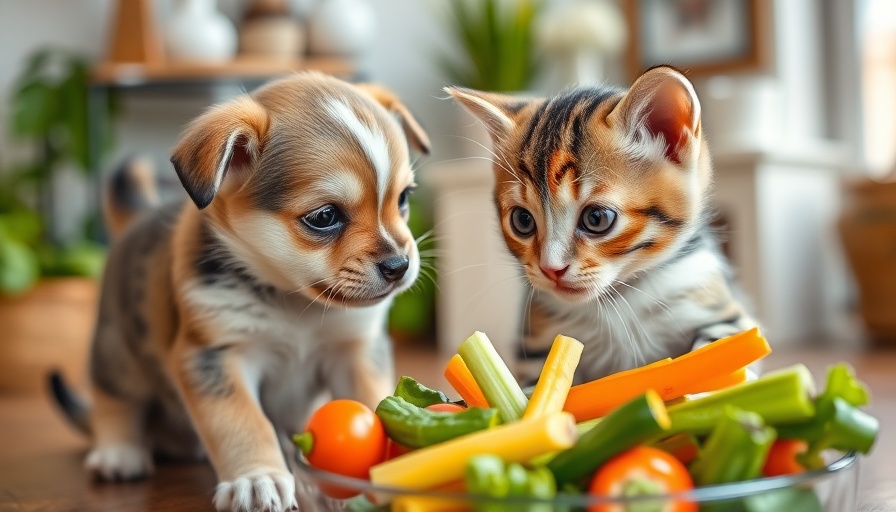
Understanding Your Pet's Nutritional Needs
As pet owners, we often struggle with the proper diet for our furry friends. The traditional perception that pets primarily need meat has shifted dramatically in recent years. Experts now emphasize the importance of incorporating fresh vegetables into your dog or cat's diet. Not only do these greens provide essential nutrients, but they also encourage detoxification and bolster antioxidant protection, critical in preventing diseases.
The Role of Vegetables in Pet Health
Vegetables are not just a source of fiber; they are packed with vitamins such as E, K, C, and several B vitamins. The real magic lies in the phytochemicals they contain — substances like flavonoids and polyphenols that have extensive health benefits. These compounds are believed to assist in promoting gut health, a cornerstone for the overall well-being of pets.
The Important Balance of Diet
It's important to understand that while vegetables are beneficial, they should only constitute a small percentage of your pet's diet. Dogs, which are omnivores, naturally enjoy a varied diet that often includes processed vegetable matter through their prey. In contrast, cats, being strict carnivores, benefit from small amounts of vegetables, often found in the stomach contents of their prey animals.
Fermented Vegetables: A Nutritional Powerhouse
Incorporating fermented vegetables into your pet’s diet can be especially beneficial. These are easier to digest and maintain a healthy balance of gut bacteria. By providing prebiotic fibers, fermented veggies support the production of short-chain fatty acids in the colon, promoting both digestive health and enhanced immune function.
What You Need to Know About Phytochemicals
The concept of hormesis is particularly fascinating when discussing phytochemicals found in vegetables. It suggests that small amounts of potentially harmful substances can be beneficial. In minimal doses, phytochemicals might stimulate the body's defense mechanisms. For our pets, even a small quantity of these compounds could promote better health outcomes.
Vet-Backed Recommendations for Vegetable Inclusion
Veterinary researchers advocate for the inclusion of low glycemic, non-starchy vegetables in pet diets. Some of the best options include spinach, carrots, and green beans. These can help maintain a dog’s or cat’s energy levels without risking obesity, ensuring your pet remains active and healthy. Always consult your vet before making significant changes to your pet's diet, as they can provide personalized recommendations tailored to your pet's health history and needs.
Cooking for Your Pet: Best Practices
When preparing vegetables for your pet, make sure to cook them lightly to improve digestibility and nutrient absorption. Steaming or boiling for a short time can break down tough fiber and make nutrients more available. Also, pureeing them can help pets ingest the maximum vitamins, minimizing waste and promoting optimal nutrition.
Listening to Your Pet's Needs
Your pet’s needs and preferences should always be taken into account. Introducing new foods slowly can make the transition easier. Monitor your pet's reactions and consult with your vet if you notice any unusual behaviors, such as changes in appetite or digestive upset. This gradual approach helps to ensure a balanced diet and fosters a healthy relationship with food.
Encouraging Healthy Habits Together
Adding fresh vegetables to your pet's meals isn’t just about nutrition; it’s a wonderful opportunity to bond with your furry friend. As you embark on this journey toward better pet health, involve your children or family members in preparing meals together. This way, you’re not only supporting your pet’s health but also creating cherished family traditions and memories.
 Add Row
Add Row  Add
Add 




Write A Comment